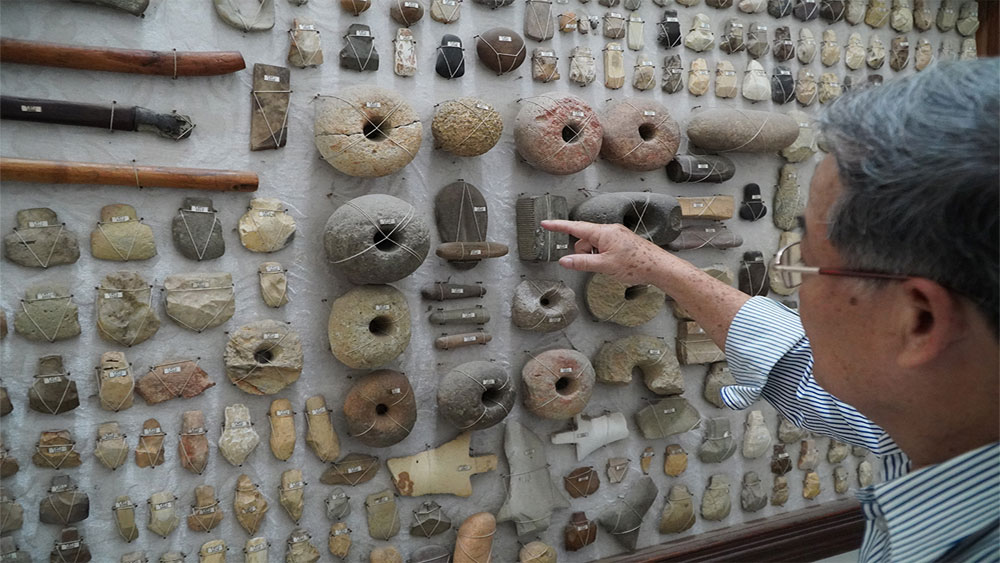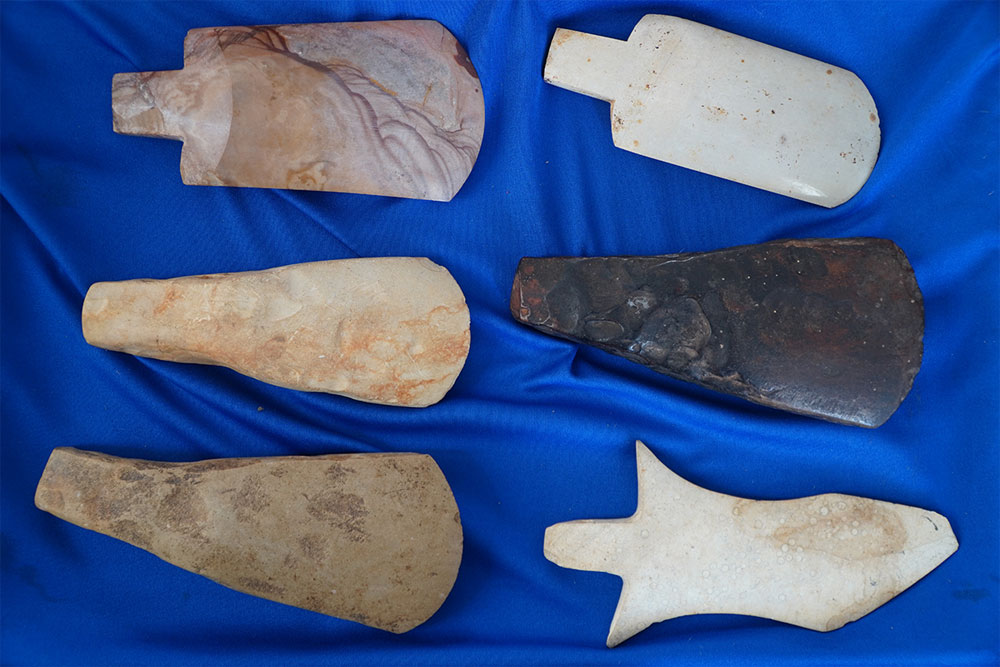Collector spends decades hoarding 15,000 prehistoric artifacts
Inside the numerous boxes Thanh opened were several ceramic and stone axes, picks and the like. The most common among these were axes made of phthanite and sandstone. Thanh carefully laid them on a sheet of barege, reminiscing on how fate had introduced him to the hobby of collecting ancient artifacts.
 |
|
Various stone artifacts, believed to have belonged to prehistoric humans, are mounted on a wall in Kon Tum Province. |
"At first I only wanted to collect them as decorations around the house. But after I learned more about them, I discovered they bore great historical value," he said.
Thanh, 67, has collected around 15,000 stone artifacts believed to have belonged to prehistoric humans about 2,000-4,000 years ago. The Central Highlands native treats his collection like a treasure trove, labeling and preserving each item with great care.
In 1988, Thanh visited Lung Leng Village in Sa Thay District of Kon Tum to mine gold, back when it was still legal. The year after, miners started uncovering rocks of various shapes and sizes: some polished, others serrated, some rugged, others refined. Many were shaped in particular forms, seemingly man-made.
Suspecting such objects were created by prehistoric humans, Thanh bought them as decorations around the house. In the following weeks, he traveled to several villages where he bartered for similarly-haped rocks, or "sky hammers" using clothes and other necessities.
By 1989, he had collected around 2,000 such objects. Though Thanh had to stop gold mining after contracting malaria in 1991, he refused to give up his collector's hobby.
During that time, Doctor Nguyen Khac Su, head of the Vietnam Institute of Archaeology’s Department of Stone Age Research, along with several colleagues embarked on a search for archaeological artifacts along Po Ko River of Sa Thay, Kon Tum. During its expedition, the team managed to study Thanh's relic collection in great detail.
"Thanks to Su, I gained a bit more knowledge about Stone Age artifacts and how to categorize them," Thanh said, adding he plans to build a private museum within the next five years to store artifacts, dedicate them to science and educate future generations on the roots of history.
According to Su, Thanh’s artifacts date from the Neolithic period to the early stages of the Iron Age, about 4,000-2,000 years ago.
 |
|
Objects made of stone and ceramics, resembling axes and picks, are collected by Van Dinh Thanh in Kon Tum Province. |
Thanh’s collection reflects different aspects in the social, economic and cultural lives of prehistoric humans living in Kon Tum, Su said. It shows people had ventured to and settled on lands along rivers in the region, especially the intersections of Dak Bla River and Po Ko River, and that they had relations with prehistoric people living in coastal areas of central Vietnam, he added.
Kon Tum might also have been a bronze metallurgy center of the Central Highlands, with around 25 bronze axes and 12 bronze axe molds discovered in the province, mostly in Sa Thay District. This shows possible connections between Kon Tum and other bronze metallurgy centers, Su noted.
"It's time for a common strategy for social science research in the Central Highlands. There needs to be multi-disciplinary studies to recreate a big picture of the Central Highlands’ cultural and social scene," he stressed.
Thanh's collection has yet to be officially recognized by authorities as archaeological artifacts. However, he is still eligible to open a private museum under Vietnamese law.
Source: VnExpress
 Bắc giang
Bắc giang













Reader's comments (0)